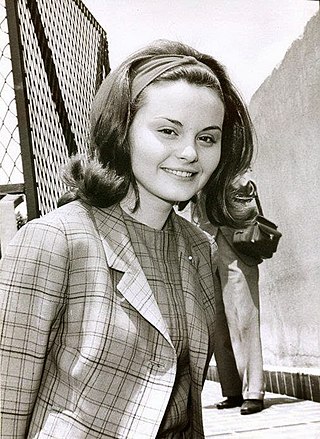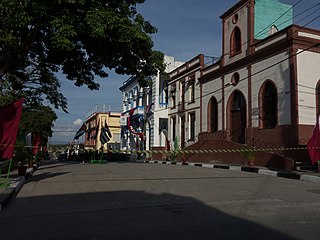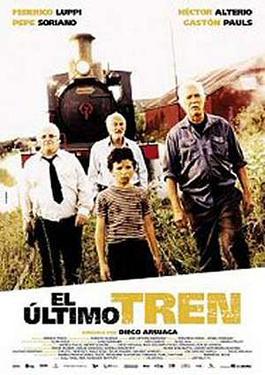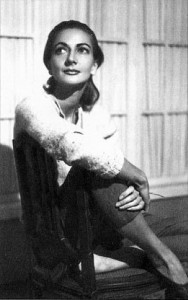Gabriel Soriano | |
|---|---|
 | |
| Born | May 3, 1971 |
| Occupation(s) | Film director, producer, screenwriter |
Gabriel Soriano (born May 3, 1971) is a Mexican writer, director and producer.
Gabriel Soriano | |
|---|---|
 | |
| Born | May 3, 1971 |
| Occupation(s) | Film director, producer, screenwriter |
Gabriel Soriano (born May 3, 1971) is a Mexican writer, director and producer.
Soriano studied film in New York and produced and directed four feature films, including Seis días en la oscuridad. This film participated in several film festivals around the world and was nominated for the Best First Work, Ópera Prima, by the Society of Mexican Cinema Journalists, Asociación de Periodistas Cinematográficos de México. Gabriel is the founder and CEO of Paynal Media, an independent film production company based in Houston, Texas. Paynal also develops web sites and TV shows for Spanish audience.
| Year | Film | Functioned as | Notes | ||||
|---|---|---|---|---|---|---|---|
| Director | Writer | Producer | Actor | Role | |||
| 1997 | El Plan B | Yes | |||||
| 2003 | Seis dias en la oscuridad | Yes | Yes | Yes | Yes | Biker | |
| 2004 | El día menos pensado | Yes | Short | ||||
| 2004 | Secreto de amor | Yes | Yes | ||||
| 2004 | The price of the american dream II | Yes | |||||
| 2005 | La cama de Lola | Yes | Yes | Yes | |||

Alberto Aguilera Valadez, known professionally as Juan Gabriel, was a Mexican singer-songwriter and actor. Colloquially nicknamed Juanga and El Divo de Juárez, Juan Gabriel was known for his flamboyant style, which broke norms and standards within the Latin music industry. Widely regarded as one of the best and most prolific Mexican composers and singers of all time, he is considered a pop icon.

María Guadalupe Araujo Yong, known professionally as Ana Gabriel, is a Mexican singer and songwriter. With over 40 million records sold worldwide, Gabriel is the best-selling Mexican female artist, and one of the best-selling Latin music artists of all time. Dubbed as the "Diva de América" and the "Luna de América", during her long career, she has performed different genres of music.

María de los Ángeles de las Heras Ortiz, better known as Rocío Dúrcal, was a Spanish singer and actress with a career spanning more than four decades. She performed pop music, bolero, mariachi and romantic ballads and is widely regarded as one of the greatest Spanish singers of all time. Popular across Mexico and Latin America, she earned the sobriquet of Reina de las Rancheras.

Gabriel Figueroa Mateos was a Mexican cinematographer who is regarded as one of the greatest cinematographers of the Golden Age of Mexican cinema. He has worked in over 200 films, which cover a broad range of genres, and is best known for his technical dominance, his careful handling of framing and chiaroscuro, and affinity for the aesthetics of artists.

Palma Soriano is a Cuban city and municipality in the Santiago de Cuba Province. With a population of 119,740 in the city proper, it is the second-largest in the province and the 16th-largest in Cuba.

Juan Soriano was a Mexican artist known for his paintings, sculptures and theater work. He was a child prodigy whose career began early as did his fame with various writers authoring works about him. He exhibited in the United States and Europe as well as major venues in Mexico such as the Museo de Arte Moderno and the Palacio de Bellas Artes. His monumental sculptures can be found in various parts of Mexico and in Europe as well. Recognitions of his work include Mexico's National Art Prize, the Chevalier des Arts et Lettres and membership in France's Legion of Honour.

The Museo de Arte Moderno (MAM) is a museum dedicated to modern Mexican art located in Chapultepec Park in Mexico City.

Maria Cecilia "Maricel" Dador Soriano is a Filipino actress and television personality. Known for her intense acting style and versatility, she is known for playing dramatic and comedic leading roles in films and television. Over the course of her career, she has received numerous accolades, including two Asian Television Awards, five FAMAS Awards, four Luna Awards, thirteen Box Office Entertainment Awards and ten Star Awards for Television.

Bruno Soriano Llido is a Spanish former professional footballer who played as a defensive midfielder.

The Last Train is a 2002 Uruguayan and Argentine, comedy drama film, directed by Diego Arsuaga, and written by Arsuaga, Fernando León de Aranoa, and Beda Docampo Feijóo. It's also known as Corazón de fuego in Argentina.

Museo de Arte Contemporáneo de Monterrey, abbreviated as MARCO, is a major contemporary art museum, located in the city of Monterrey, in Nuevo León state of northeastern Mexico.
Seis dias en la oscuridad, also released as Six Days in the Dark, is a 2003 film written and directed by Gabriel Soriano and starring Ludwika Paleta, Dario T. pie and Gustavo Sánchez Parra. In this urban thriller set in Mexico City three rich kids, Claudio, Vampiro and Juan Carlos enjoy a carefree life until Claudio is blamed for a car crash. To pay the corrupt police officers who are after him the friends decide to stage Claudio's kidnapping. The film was screened in several festivals, including Guadalajara International Film Festival, San Diego Film Festival, Mar del Plata Film Festival and Festival del Cinema Latinoamericano di Trieste.

The José Luis Cuevas Museum is located just off the Zócalo within the Historic center of Mexico City, in Mexico City, Mexico. The museum and Church of Santa Inés were built as parts of the Convent of Santa Inés complex. The museum is in the convent's colonial era residential hall.

Gabriel José de la Concordia García Márquez was a Colombian writer and journalist, known affectionately as Gabo or Gabito throughout Latin America. Considered one of the most significant authors of the 20th century, particularly in the Spanish language, he was awarded the 1972 Neustadt International Prize for Literature and the 1982 Nobel Prize in Literature. He pursued a self-directed education that resulted in leaving law school for a career in journalism. From early on he showed no inhibitions in his criticism of Colombian and foreign politics. In 1958, he married Mercedes Barcha Pardo; they had two sons, Rodrigo and Gonzalo. It is a lesser known fact that Gabriel had a daughter with Mexican writer Susana Cato, part of an extramarital affair. They named her Indira, and she took her mother's last name.
Alfonso Michel was a Mexican painter, contemporary with the Mexican muralism movement, but whose artistry made him a forerunner to the Generación de la Ruptura that followed.

"Mañana, Mañana" is a song written by Mexican singer-songwriter Juan Gabriel. Argentine singer Libertad Lamarque performed the song in the Mexican movie La loca de los milagros. Juan Gabriel released his recording of the song, a duet with Estela Nuñez, on his album Ella (1979). The song describes the departure of a lost love who will never return.

Paul David Soriano is a Filipino commercial and film director, producer.

María Luisa Elío Bernal was a Spanish writer and actress exiled in Mexico. She wrote two books and the script of the award-winning autobiographical film El balcón vacío, which was the first film to depict the lives of Spanish exiles during the Spanish Civil War. She also performed on Mexican television and Mexican films. Elío was involved in several cultural and literary circles. She was also an inspiration for Gabriel García Márquez. His masterwork One Hundred Years of Solitude was dedicated to Elío and her husband.

"Así Fue" is a song written and produced by Mexican singer-songwriter Juan Gabriel and performed by Spanish singer Isabel Pantoja. It was released in 1988 as the second single from her studio album Desde Andalucía (1988). The song tells of the singer dealing with her ex-lover after she has a new fiancé. It reached No. 2 on the Billboard Hot Latin Songs chart in the United States, and was the fifth best-performing Spanish-language single of 1989 in the US. The song's composer, Juan Gabriel, performed a live rendition of the song at the Palacio de Bellas Artes in Mexico City which was recorded and released as a live album titled Celebrando 25 Años de Juan Gabriel: En Concierto en el Palacio de Bellas Artes (1998).